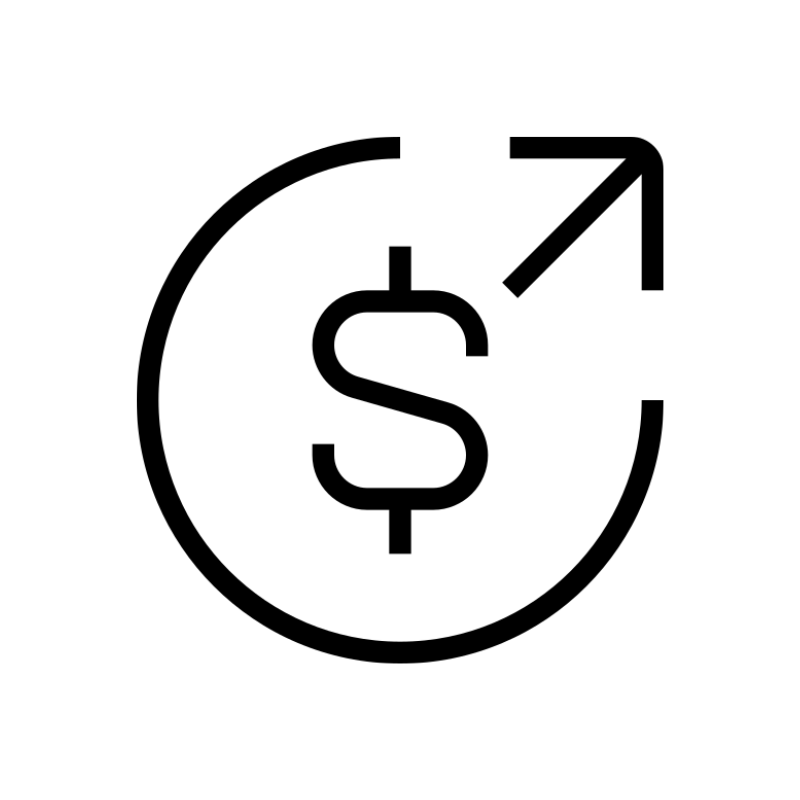Are you considering creating a website and wondering whether you need a subdomain or a domain?
Domains and subdomains are both crucial for helping people find your website, but they serve different functions.
A domain is like a website’s address that gets people to your content, services, or products, while a subdomain is a section on your website.
You don’t need to be tech-savvy to understand the key concepts of subdomain vs domain to make the best decision for your brand. We’ll break it down for you.
Table of Contents
What Is a Domain?
Before we compare subdomains vs. domains, let’s review the basics.
Instead of typing complex numbers known as an IP address, a domain name is a simple online address, like a business’s physical street address that you type into a browser to locate a website.
An example of an IP address is 192.168.1.1.
Now, instead of using the numerical version of a business address, you use a domain name like yourbusiness.co.za.
Breaking Down a Domain Name
From the example yourbusiness.co.za, a domain name consists of several parts that work together to identify the online address of a blog, business, or corporation. Here’s what each part means:
| Domain part | What it does | Example |
| Second-Level domain | Business, brand, or corporation’s unique name | yourbusiness |
| Top-Level domain | Extension at the end | .co.za |
Essential Features Of a Domain Name
1) Unique Identity
Every website has a unique domain name, and no two sites share the same domain name. After registering a domain name, it belongs to you and no one else can buy the exact domain name.
Domain registrars offer a search tool that allows customers to check whether a domain has been previously registered.
2) Brandability
A domain reflects a brand. It can sell a brand even before a customer visits your website to learn more about what you’re all about.
Therefore, consider choosing a domain name that is easily memorable to clients. Also, avoid using complex symbols like hyphens because they can complicate a domain name.
For example, the domain name your-business-za.com is more complicated compared to yourbusiness.com, which is easier for customers to remember.
3) Requires Renewal
Registering a domain name secures it for a while. You need to renew it annually to maintain ownership.
If you fail to renew a domain name, it becomes available for someone else to purchase.
Every registrar has set different domain renewal prices depending on the extension. For example, at Truehost, a .co.za domain renewal costs R80, while a .com domain renewal costs R230.
4) SEO
Search engine optimization is a crucial component of establishing a successful business. Here’s how your domain name influences SEO:
- Keyword-rich domains can perform well locally
- Short domain names boost traffic
- Country-specific domains perform well locally
Why You Need To Register a Domain
Registering a domain means:
- Other businesses cannot use your name online
- You can harmonize all your digital platforms
- It enhances professionalism in your online presence
- You can have a custom email for your business
If you have a domain name in mind for your business, you can check whether it is possible to register it here.
What Is a Subdomain?
A subdomain separates the different sections of your website. It does not require registration. You can have as many subdomains as you want on your website.
Examples of subdomains
| Subdomain | Purpose |
blog.yourbusiness.com | Company blog |
shop.yourbusiness.co.za | eCommerce store |
support.yourbusiness.com | Customer care portal |
Key Features of a Subdomain
1) It is Free
There are no additional charges for the subdomain, as it is an inclusive feature during domain registration.
For example, if you have the domain name yourbusiness.com, you can create the following subdomains with no added costs:
- blog.yourbusiness.com
- shop.yourbusiness.com
- support.yourbusiness.com
2) Organizes content
Subdomains are like having departments in your online business. Even complex sites benefit from subdomains because they break down websites into manageable sections, making them easier to navigate and manage. They can also make your website look less cluttered and professional.
Subdomains can organize a website depending on:
- Function
- User segmentation
- Geographical targeting
3) SEO Impact
Search engines perceive subdomains as separate from your domain. Therefore, different subdomains can have separate SEO strategies, tailored to the specific needs of each department.
Additionally, having subdomains can aid in conducting thorough SEO audits, thereby enhancing SEO strategies.
4) Business Flexibility
You can have multiple business identities using subdomains. For example, you can have an e-commerce where you sell products and a news section where you discuss industry developments on the same website.
Also, subdomains provide distinct URLs that help users understand which resource they are accessing on the website, thereby enhancing shareability.
Subdomain vs Domain: Key Differences
Cost
Domains require a registration fee and an annual renewal fee, which are provided by a domain registrar. On the other hand, subdomains are free and come as part of the domain.
Domain names have additional costs, such as hosting. You cannot have a domain name without hosting.
Structure
A domain is a stand-alone, complete address. A subdomain is dependent on the domain and cannot stand alone. The subdomain is just an extension and comes before the domain name.
For example:
Domain Structure: [subdomain].[second-level].[top-level]
Example Domain: www.yourbusiness.com
Example Subdomain: blog.yourbusiness.com
SEO
Domains hold more SEO power than subdomains and are, therefore, more impactful.
Domains are responsible for branding, while subdomains improve user experience and SEO strategies within a website.
Having multiple subdomains requires different SEO strategies for each subdomain because search engines rank them separately.
On the other hand, a domain is a single entity, and a search engine treats it as one.
Usage
You can use a domain to:
- Launch a business
- Geographical expansion, for example, has a .com domain for global reach and a .co.za for customers in South Africa.
- Separate brands, for example, you can have a premium brand domain and a budget brand domain for an online clothing store.
You can have a subdomain for:
- Testing environments
- Segmenting content
- Separating website functions
The Set Up
Setting up a domain is different from setting up a subdomain. A simplified process of how to set up a domain:
- Check domain availability
- Follow the purchase process and make payment
- Setting DNS records
- Connect to a valid hosting plan
- Wait for propagation
Setting up a subdomain looks like:
- Log in to cPanel
- Go to the subdomain sections
- Enter the prefix of your choice
- Click create
Best Practises
Subdomains and domains have varying best practices. For the domain, you need to:
- Have a short domain
- Renew the domain before it expires
- Choose the best domain extension
The best practices for subdomains include:
- Do not create too many subdomains for one website
- Make subdomains consistent
- Have subdomains for only logically separate functions
Final Take
Subdomains and domains serve different functions, and each plays a key part in a website.
While a domain represents a standalone brand with strong SEO authority and complete control of your business, a subdomain organizes content on a website. It is perfect for testing various website functions.
Key takeaways to remember
- Domains are your primary website address and are perfect for branding
- Subdomains are a free extension that structures large websites
- A domain brands while subdomains organize
Ready to secure a domain and organize your websites with free subdomains? Chat with Truehost experts for personalized assistance.
 Web Hosting
Web Hosting Windows HostingBuilt for Windows apps and websites – stability, speed and flexibility
Windows HostingBuilt for Windows apps and websites – stability, speed and flexibility Reseller HostingLaunch a hosting business without technical skills or expensive infrastructure
Reseller HostingLaunch a hosting business without technical skills or expensive infrastructure Affiliate ProgramRefer customers and earn commissions from sales across our platform
Affiliate ProgramRefer customers and earn commissions from sales across our platform Domain SearchFind and secure a domain name in seconds with our quick lookup tool
Domain SearchFind and secure a domain name in seconds with our quick lookup tool CO ZA Domains
CO ZA Domains All DomainsExplore domain names from over 324 TLDs globally – all in one place
All DomainsExplore domain names from over 324 TLDs globally – all in one place Free Whois Lookup Tool South Africa
Free Whois Lookup Tool South Africa VPS
VPS SSLs
SSLs







